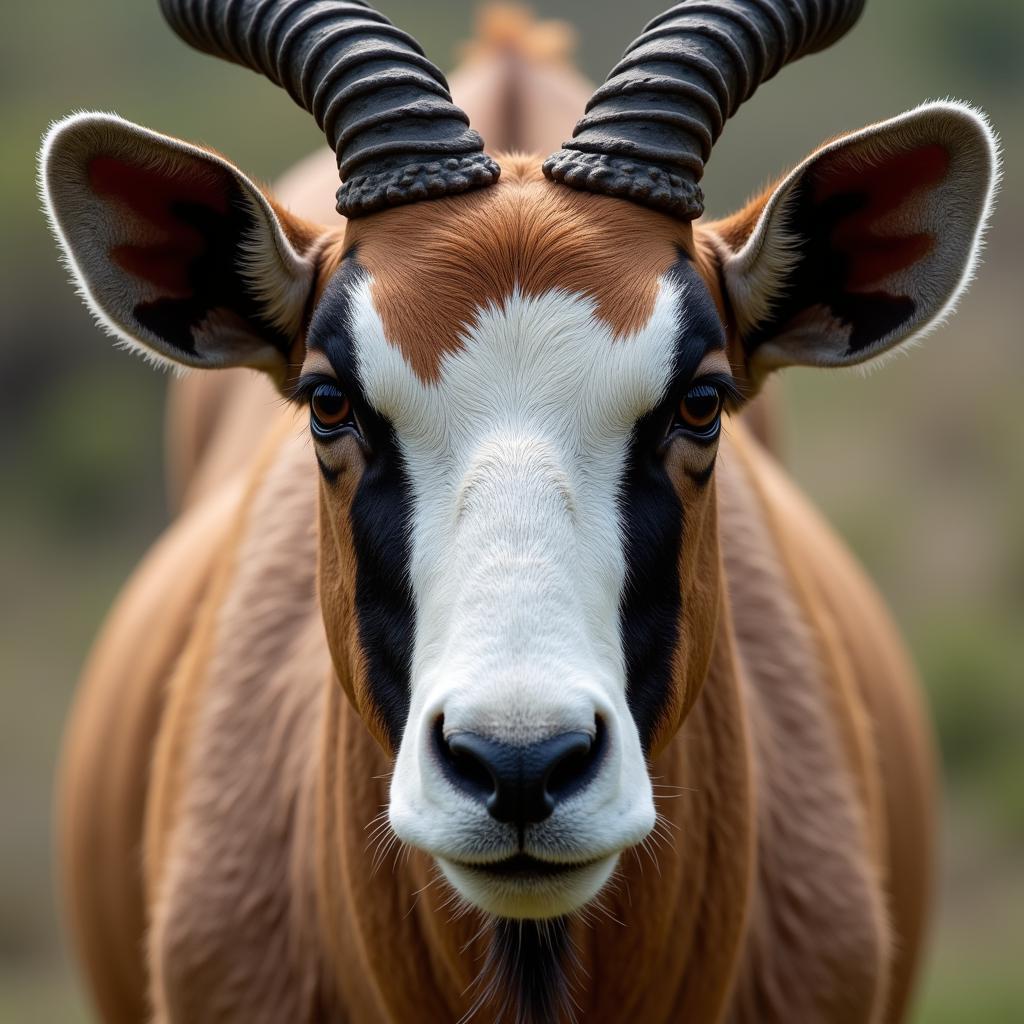The Enigmatic Allure of the African Oryx: A Majestic Antelope
The African oryx, a striking antelope species inhabiting the arid and semi-arid regions of Africa, captivates with its unique beauty and resilience. Often referred to as a “desert antelope,” this majestic creature embodies the spirit of survival in some of the harshest environments on Earth.
 An African oryx standing gracefully on a dry grassland, its long horns curving elegantly against the backdrop of a vast savanna.
An African oryx standing gracefully on a dry grassland, its long horns curving elegantly against the backdrop of a vast savanna.
A Closer Look at the African Oryx
The African oryx belongs to the genus Oryx, characterized by their distinctive long, straight, or slightly curved horns. There are four recognized species of African oryx:
- Gemsbok (Oryx gazella): Found in southern Africa, characterized by a white face with black markings and a distinctive black stripe across their flanks.
- East African oryx (Oryx beisa): Inhabits the Horn of Africa, with less contrasting markings than the Gemsbok.
- Scimitar oryx (Oryx dammah): Once widespread in North Africa, now extinct in the wild, with a uniformly pale coat and long, curved horns.
- Arabian oryx (Oryx leucoryx): Native to the Arabian Peninsula, with a white coat and black markings on its face and legs.
Each species exhibits unique adaptations to their specific habitats.
 A close-up view of an African oryx's face, highlighting its striking black and white markings and long, sharp horns.
A close-up view of an African oryx's face, highlighting its striking black and white markings and long, sharp horns.
Mastering the Art of Desert Survival
African oryx are true masters of desert survival, showcasing remarkable adaptations that allow them to thrive in environments where many animals struggle.
- Water Conservation: They can survive for weeks without drinking water, obtaining moisture from the plants they consume. Their kidneys are highly efficient, producing concentrated urine to minimize water loss.
- Thermoregulation: They can tolerate high body temperatures, up to 45°C (113°F), which helps them conserve water by reducing the need for evaporative cooling through panting.
- Diet and Foraging: These herbivores have adapted to digest a variety of tough, dry vegetation, including grasses, herbs, and even roots.
The Role of the Oryx in African Culture and Ecosystems
Beyond their captivating appearance, African oryx hold cultural and ecological significance:
- Cultural Symbolism: In many African cultures, the oryx symbolizes strength, endurance, and grace. They appear in traditional stories, songs, and dances, representing the resilience of nature and the human spirit.
- Keystone Species: As large herbivores, they play a vital role in their ecosystems by grazing on vegetation and influencing plant diversity. Their dung also contributes to nutrient cycling.
- Conservation Status: While some species, like the Gemsbok, have healthy populations, others, like the Scimitar oryx, face a dire situation. Conservation efforts are crucial to protect these magnificent creatures and their fragile habitats.
 A herd of African oryx grazing peacefully on the vast African savanna, their white coats gleaming under the warm sunlight.
A herd of African oryx grazing peacefully on the vast African savanna, their white coats gleaming under the warm sunlight.
The Future of the African Oryx
The future of the African oryx depends on collaborative conservation efforts:
- Habitat Protection: Protecting their natural habitats from degradation and fragmentation is vital.
- Anti-Poaching Measures: Strict enforcement of anti-poaching laws is crucial to combat illegal hunting.
- Community-Based Conservation: Engaging local communities in conservation efforts ensures the long-term protection of these animals.
By understanding the oryx’s importance and supporting conservation initiatives, we can contribute to ensuring these magnificent creatures continue to grace the African landscapes for generations to come.

